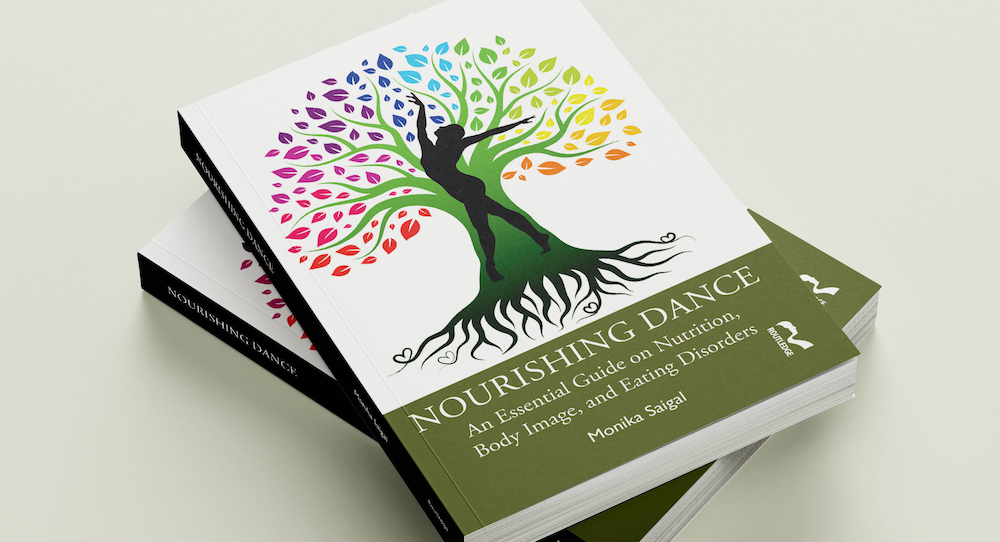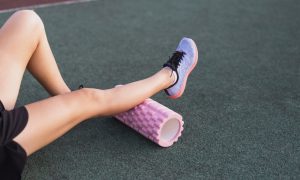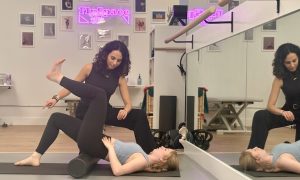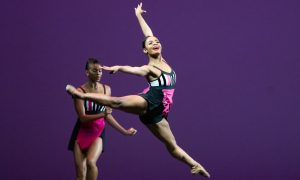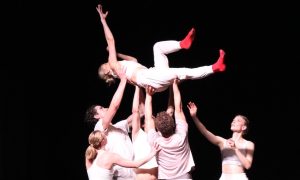There is a new book out that is a must-read for dancers, teachers and directors. It’s called Nourishing Dance: An Essential Guide on Nutrition, Body Image, and Eating Disorders by Monika Saigal MS, RD, CEDS, CDN. The research presented is essential to understand, but the best parts of the book are the practical, real-life tips from someone who understands our dance world from the inside. Here, two dietitians who have spent their lives working in this world discuss the book and how we can best help dancers.
I love how you start off the book by clearing up some potentially challenging terminology. The word ‘healthy’ can sometimes be tricky.
“When I say, ‘healthy eating,’ I mean eating in a way that is nourishing, enjoyable, and adaptive and that supports their physical and mental health and a peaceful relationship with food and their body (and this will look different for everyone).
When working with dancers, I like to explore what the word ‘healthy’ means to them. This conversation helps reveal things that a dancer might view as healthy that really aren’t (for example, restrictive or compensatory approaches to eating), and offers opportunities to challenge and reframe them so we can truly be supportive of the dancer’s health.”
What does being ‘healthy’ even mean when someone is pursuing a career in the high pressure world of dance? Your book goes into detail about this.
“I love discussing this with dancers! Although there will be individual variability on what this looks like in practice, being a ‘healthy dancer’ includes fueling your body for dance and life, caring for your body to help reduce the risk of injury, getting adequate sleep and rest, caring for your mental health, finding dance/life balance, and having/working toward a peaceful relationship with food and more balanced and resilient body image.”
After years in the dance world, I appreciated your statement that practicing good self-care actually improves not just the dancers but the dance world as a whole. How can we foster an environment that makes this easier?
“Those who train and care for dancers need a better understanding of the consequences of not prioritizing and supporting dancer health and well-being, which can be enduring (e.g. quality of life impacts of injury, disordered eating habits, poor self-worth and body image). This is why I think it’s essential to provide education to teachers/staff and parents, not just to dancers. It’s important to understand what’s at stake if we don’t support dancers in caring for themselves and to recognize the inextricable links between physical and mental health, self-care, and performance. My book has many ways we can help — giving enough time to eat, shifting our language and messaging, and providing resources to get professional help from a dietitian and therapist are just a few.”
Your book beautifully illustrates the science behind why diets don’t work, and how they actually backfire in the long run. Your chapter, ‘Dancing in Diet Culture,’ is a must-read for all dancers. What is one main point you wish all dancers could understand about the ‘dieting cycle’?
“Most people go on a diet because they want to lose weight or believe a diet will help them feel better about their body or will make them healthier, but dieting almost always leads to the opposite. This isn’t because you lack willpower or did it wrong; it’s because diets don’t work.”
In your chapter, ‘Dancing on Empty,’ you address one of the number one issues I also see in my work which is energy deficits during their work day even though dancers get adequate nutrients later in the evenings. What does ‘Low Energy Availability (LEA)’ mean?
“LEA is the result of under-fueling, and it means that the body doesn’t have enough energy to fuel exercise plus all of its other needs (normal body functioning, growth/development, daily activities), which can lead to multiple negative health and performance consequences.”
I’m seeing many dancers with LEA have higher rates of injuries. What are you seeing in your practice with dancers who are consistently in an energy deficit?
“In addition to more frequent and/or slow-healing injuries, dancers with LEA can feel more fatigued or weak and experience digestive issues, sleep disturbances, greater stress, and diminished enjoyment from dance.”
Your chapter, ‘Gentle Nutrition for Dancers,’ provides some great ideas for how, what and when dancers can get what they need to perform and recover. What are your top tips?
“Plan ahead! Schedule time for grocery shopping and meal prep, stay well-stocked with quick and easy meal and snack options, and always have a few different snack choices in your bag. I find that ‘rules’ and misinformation about what dancers ‘should’ be eating interfere with eating enough, so embracing flexibility over rigidity and prioritizing adequacy over attempts at ‘perfect eating’ can also be helpful.”
How can nutrition affect concentration, focus and mental health?
“Many of us have experienced how it becomes harder to concentrate and focus when we get too hungry. We’re more likely to make mistakes, have a harder time learning, and can feel irritable. Under-fueling on a regular basis can contribute to anxiety and depression, decrease resilience to stress, and be the catalyst for developing disordered eating. It also impacts sleep (which affects mental health) and increases preoccupation with food which can have an additive impact on concentration, focus and mental health.”
Chapter 7 addresses injuries. What’s the most important message?
“Make sure you are eating enough, and, if possible, get support from a dance dietitian. I often see injured dancers decrease their intake excessively, usually related to fear of weight gain or misconceptions about nutrition needs during injury, and this can delay healing and even prevent full recovery.”
The book can be found at nourishingdance.com.
For more information on Monika Saigal, visit msnutrition.com. For more information on Emily C. Harrison, head to dancernutrition.com.
By Emily C. Harrison MS, RD, LD of Dance Informa.


